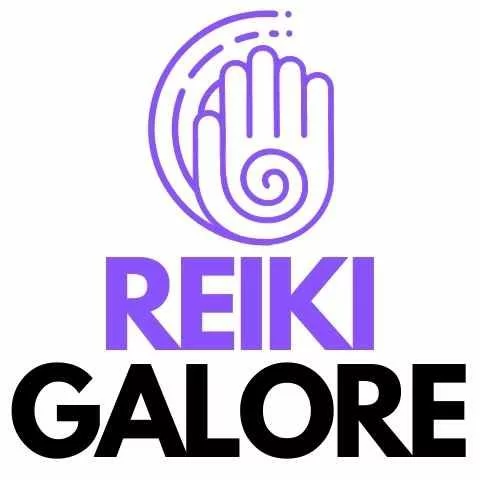Welcome to our comprehensive guide on Reiki and sound healing techniques! If you’re looking to explore holistic healing modalities, energy healing methods, and vibrational healing, you’ve come to the right place. In this article, we will delve into the world of Reiki, a form of complementary therapy that originated in Japan, and the powerful healing properties of sound. Join us on this transformative journey towards greater well-being and inner peace.
Key Takeaways:
- Reiki is a form of complementary therapy that uses palm healing or hands-on healing to transfer “universal energy” from the practitioner to the patient.
- There are various types of Reiki, including traditional Japanese Reiki, Western Reiki, and Crystal Reiki, each with its unique characteristics.
- Reiki has been used to help with physical conditions such as joint pain and headaches, as well as mental health issues like stress and anxiety.
- Sound healing techniques use sound vibrations to promote relaxation, balance, and well-being.
- Both Reiki and sound healing techniques can be used alongside conventional medical treatments and offer a comprehensive approach to holistic healing.
What is Reiki and How Does it Work?
Reiki is a form of energy healing that involves the transfer of “universal energy” from the practitioner to the patient. It is believed to promote emotional or physical healing and balance the energy within the body. Reiki practitioners use a technique called palm healing or hands-on healing, where they place their hands lightly on or over specific areas of the body. This is said to activate the healing energy and facilitate the flow of energy throughout the body.
Reiki is based on the belief that energy can become blocked or depleted, leading to physical and emotional imbalances. By transferring healing energy to the patient, Reiki aims to restore harmony and well-being.
The effectiveness of Reiki lies in its ability to address the root cause of imbalances rather than just treating symptoms. It works on a holistic level, addressing the physical, emotional, mental, and spiritual aspects of an individual. Through the gentle touch of the practitioner’s hands, the recipient is able to absorb the healing energy and experience deep relaxation and rejuvenation.
Benefits of Reiki:
- Supports physical and emotional healing
- Reduces stress and promotes relaxation
- Relieves pain and discomfort
- Enhances overall well-being and vitality
- Improves sleep quality
- Boosts the immune system
- Increases self-awareness and spiritual growth
Reiki is a safe and non-invasive therapy that can be used alongside conventional medical treatments. It is suitable for people of all ages and can be beneficial for various conditions, including chronic pain, anxiety, depression, and fatigue. By balancing the energy within the body, Reiki supports the body’s natural healing abilities, promoting harmony and a sense of wholeness.
Different Types of Reiki
Reiki, as a holistic healing modality, has evolved over time, resulting in different types and approaches to the practice. Each type of Reiki offers its own unique techniques and perspectives, allowing individuals to find the style that resonates most with them. Let’s explore some of the different types of Reiki:
Traditional Japanese Reiki
Traditional Japanese Reiki, also known as Usui Reiki, is the original form developed by Mikao Usui. It follows the principles and practices established by Usui and places a strong emphasis on direct laying on of hands. Traditional Japanese Reiki aims to connect with the original teachings of Reiki and maintain the authenticity of the practice.
Western Reiki
Western Reiki, known as Usui Shiki Ryoho, is a form of Reiki that was introduced to the West and has integrated additional symbols and techniques. It incorporates elements of traditional Japanese Reiki while also adapting to the cultural and spiritual context of Western practitioners. Western Reiki often includes standardized hand positions and training levels.
Crystal Reiki
Crystal Reiki combines the healing properties of crystals with Reiki energy work. Practitioners utilize specific crystals in conjunction with Reiki techniques to enhance the vibrational healing and balance. Crystals are selected based on their unique properties and the intended healing goals, amplifying the effects of Reiki energy.
Animal Reiki
Animal Reiki is a specialized form of Reiki that focuses on supporting the well-being of animals. It involves adapting Reiki techniques for animals, who may have different energy systems and sensitivities from humans. Animal Reiki practitioners work with animals to offer comfort, relaxation, and healing energy, promoting physical and emotional well-being.
| Type of Reiki | Description |
|---|---|
| Traditional Japanese Reiki | The original form developed by Mikao Usui, emphasizing direct laying on of hands. |
| Western Reiki | Introduced to the West, incorporating additional symbols and techniques. |
| Crystal Reiki | Combines the healing properties of crystals with Reiki energy work. |
| Animal Reiki | Specialized form for supporting the well-being of animals. |
These different types of Reiki offer practitioners and recipients a range of options to explore and experience the benefits of this holistic healing modality. Whether you resonate with the authenticity of traditional Japanese Reiki, the integration of Western Reiki, the amplification of crystal healing, or the focus on animal well-being, there is a type of Reiki that can meet your unique needs and preferences.
Benefits of Reiki
Reiki offers a wide range of benefits for both physical and mental health. This holistic healing modality has been used to alleviate joint pains, headaches, and symptoms associated with chronic conditions like fibromyalgia. By promoting relaxation and reducing stress, Reiki can also help manage anxiety, depression, and other mental health issues.
During a Reiki session, patients often experience deep relaxation and a sense of peace. The gentle touch and transfer of healing energy can create a calming effect on the body and mind. Many people report feeling lighter, more balanced, and rejuvenated after a session. Some may even experience tingling sensations or see colors, indicating the activation of energy flow within the body.
The Physical Benefits of Reiki
Reiki can have a positive impact on physical health by helping to alleviate pain, improve sleep, and enhance the body’s natural healing response. It can also support the immune system and promote overall well-being. By addressing imbalances in the body’s energy system, Reiki assists in restoring harmony and facilitating the body’s ability to heal itself.
“Reiki has helped me manage my chronic pain and reduce my reliance on medication. It has become an integral part of my wellness routine.” – Sarah, Reiki recipient
The Mental and Emotional Benefits of Reiki
Reiki is not only effective in addressing physical ailments but also in promoting mental and emotional well-being. By reducing stress and anxiety, it can help individuals gain clarity and find inner peace. Reiki sessions often provide a safe space for emotional release and healing, allowing individuals to let go of negative emotions and promote self-growth.
- Reduces stress and anxiety
- Promotes emotional clarity
- Supports spiritual growth
Reiki is a safe and non-invasive therapy that can be safely used alongside conventional medical treatments. Whether you’re seeking relief from physical pain, looking to manage stress, or simply aiming to improve your overall well-being, the benefits of Reiki make it a valuable addition to any holistic healing approach.
Sound Healing Techniques
Sound healing techniques offer a powerful and holistic approach to wellness and relaxation. By harnessing the power of sound vibrations, these techniques can promote physical, emotional, and spiritual well-being. There are various methods that incorporate sound healing, including meditation and sound therapy, mindfulness and sound healing, and the use of specific sound healing frequencies.
In meditation and sound therapy, soothing sounds and frequencies are used to create a peaceful and tranquil environment. This practice allows individuals to enter a deep state of relaxation and promotes a sense of calm and inner peace. Mindfulness and sound healing, on the other hand, involve being fully present and aware of the sounds and vibrations in the surrounding environment. This practice helps individuals connect with their senses and experience a heightened sense of awareness and clarity.
“Sound healing is a transformative practice that allows individuals to tap into the healing power of sound vibrations.”
Sound healing frequencies play a crucial role in these techniques. Different frequencies are believed to have specific effects on the body and mind. For example, certain frequencies are thought to promote relaxation, reduce stress, and improve sleep, while others may enhance focus, boost creativity, or stimulate energy flow.
Meditation and Sound Therapy
Meditation and sound therapy is a powerful combination of mindfulness and sound healing. By incorporating soothing sounds and frequencies into meditation practice, individuals can deepen their state of relaxation and promote overall well-being. This technique is often used to reduce stress, alleviate anxiety, and improve sleep quality. It can also enhance spiritual growth and foster a deeper connection with oneself.
Mindfulness and Sound Healing
Mindfulness and sound healing involve being fully present and aware of the sounds and vibrations in the environment. By tuning into the subtle nuances of sound, individuals can cultivate a deeper sense of mindfulness and experience a greater sense of peace and tranquility. This practice can be done in various settings, such as nature walks, sound baths, or even during daily activities like eating or commuting.
Sound Healing Frequencies
Sound healing frequencies are specific tones and vibrations that are used to stimulate the body’s natural healing process. Different frequencies have different effects on the body and mind, and practitioners select the appropriate frequencies based on their intended goals. For example, low-frequency tones are often used for deep relaxation, while higher frequencies may be used to promote energy flow and vitality.
Overall, sound healing techniques offer a unique and effective way to promote well-being and balance. Whether through meditation and sound therapy, mindfulness and sound healing, or the use of specific sound healing frequencies, these techniques can help individuals achieve a state of deep relaxation, enhance their mental clarity, and foster a sense of inner peace.
Conclusion
In conclusion, Reiki and sound healing techniques offer powerful holistic approaches to healing and promoting wellness. Reiki, an energy healing modality, aims to restore harmony within the body and facilitate physical and emotional healing. Sound healing, on the other hand, utilizes the vibrations of sound to promote relaxation and balance. Both practices can be incorporated alongside conventional medical treatments, providing a comprehensive and integrative approach to well-being.
By exploring the world of Reiki and sound healing, individuals can embark on a transformative journey towards greater harmony and spiritual growth. These practices not only address physical ailments but also support inner peace and overall wellness. Whether seeking relief from chronic conditions, managing stress and anxiety, or simply wanting to enhance one’s spiritual journey, Reiki and sound healing techniques offer a pathway to holistic healing and a deeper connection with oneself.
Embracing Reiki and sound healing can unlock the potential for inner peace and well-being. The healing qualities and benefits of these modalities extend beyond the physical realm, offering a holistic approach that addresses the mind, body, and spirit. Through the use of energy and sound vibrations, individuals can experience deep relaxation, emotional clarity, and spiritual growth. By integrating Reiki and sound healing techniques into their lives, individuals can embark on a journey of self-discovery and attain a state of holistic wellness.




